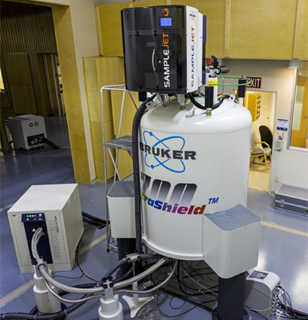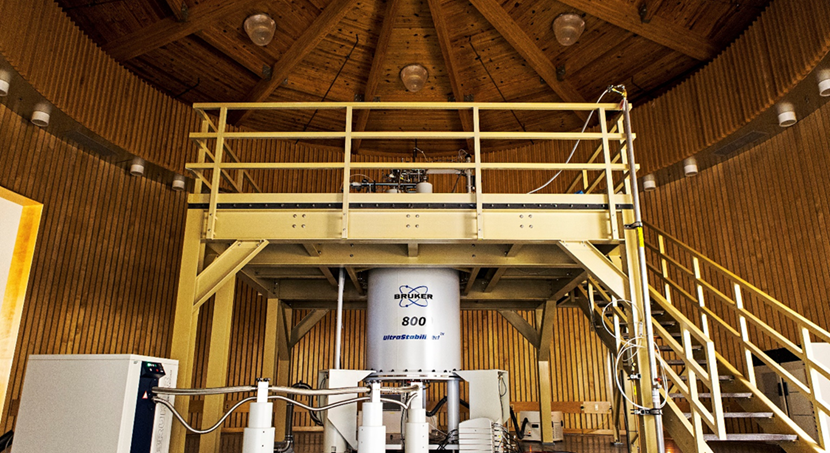Nuclear magnetic resonance spectroscopy (NMR) Facility

700 MHz nuclear magnetic resonance spectrometer with cryogenically cooled probes.
NIST operates and maintains the NMR facility at the Hollings Marine Laboratory (HML). Built in 2006, the 5,600 square foot space was specifically designed within strict vibration, acoustic and temperature stability criteria to support two ultra-high field NMR spectrometers (700 and 800 MHz Bruker Avance II) equipped with cryogenically cooled probes for enhanced sensitivity.
NMR spectroscopy is an analytical technique commonly used to characterize the chemical structure of organic molecules with value to the fields of physics, chemistry, and biology. High reproducibility is one of the fundamental advantages of NMR, in addition to its inherent quantitative, non-destructive nature and the capability to analyze complex biological specimens such as tissues and biofluids with minimal sample pre-processing. Common applications of NMR in the Biochemical and Exposure Science Group include NMR-based metabolomics, purity analysis, and structural elucidation. Capabilities encompass solution state NMR with a variety of probes suited for the detection of multiple nuclei (such as 1H, 13C , and 15N) and in situ NMR through high resolution magic -angle spinning (HR-MAS).


